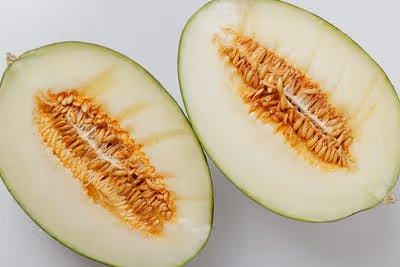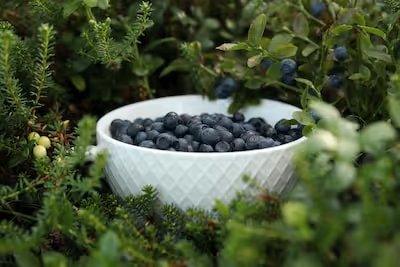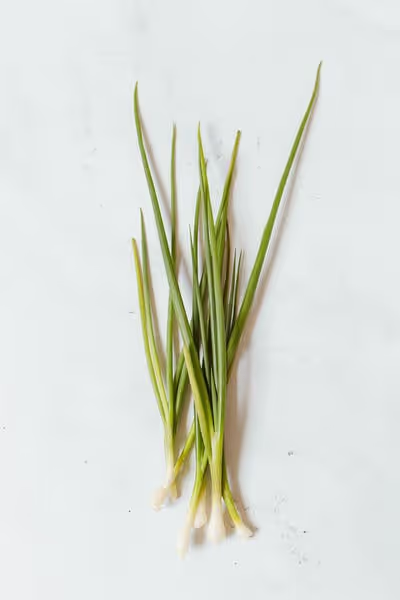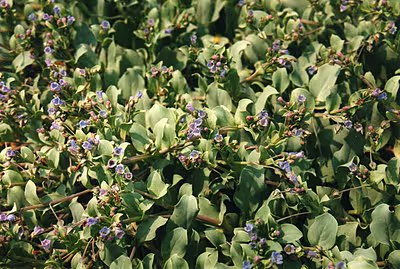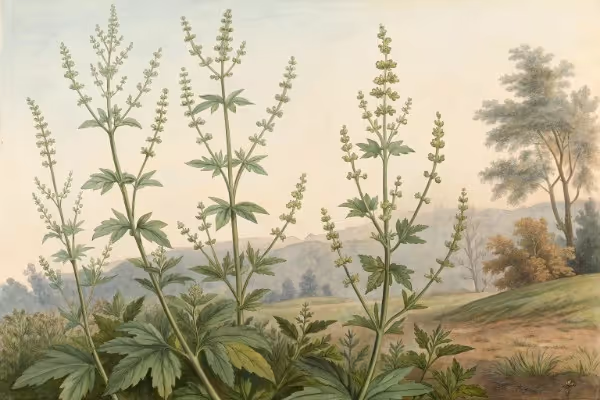Growing Mallow: Expert Advice for Healthy, Beautiful Plants
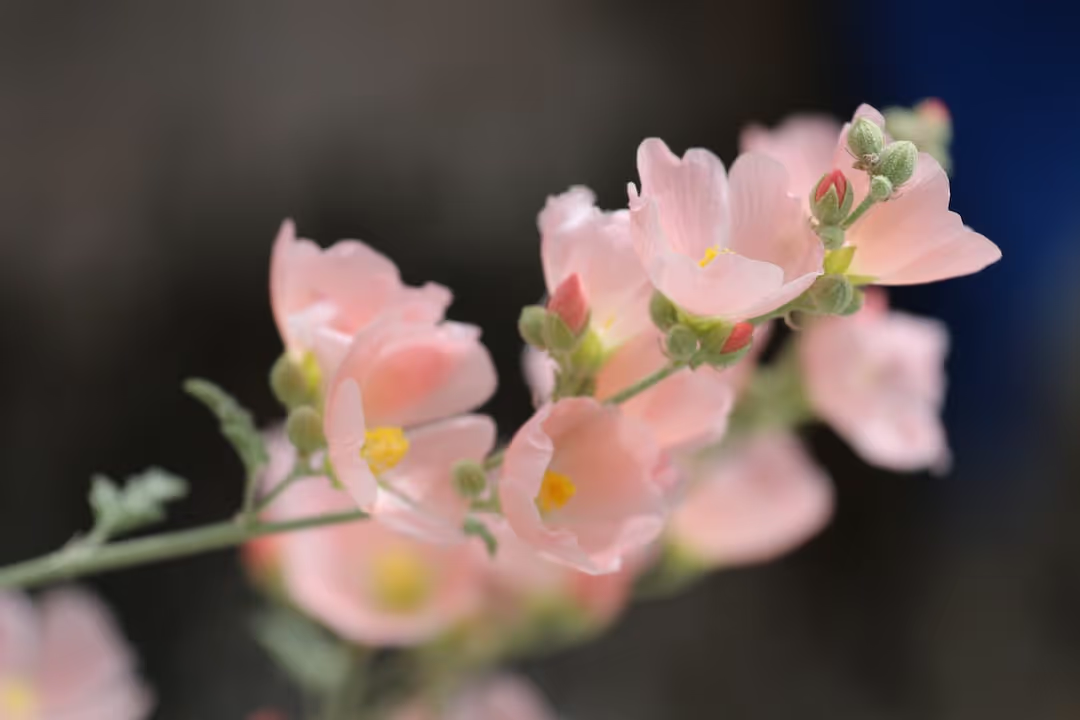
Growing Mallow
Growing mallow calls for sunlight, well-drained soil and a spirit willing to experiment. Sow seeds directly into warm, loosened earth, water moderately, and prune lightly to encourage blooms. Mallow plants reward gardeners richly—read on for practical wisdom that'll transform your garden beds into thriving botanical havens.
Cheatsheet: Fast, Flourishing Mallow
🌱 Site & Soil
- Sun: Full (6-8h)
- Soil: Well-draining, loamy, pH 6.0-7.5
- Drought-tolerant; roots reach deep
🌡️ Planting Specs
- Outdoor sow: After last frost (55°F/13°C+ soil)
- Depth: 1/4 in (6 mm)
- Spacing: 18–24 in (45–60 cm)
- Rows: 2 ft (60 cm) apart
- Germinates: 10–14 days
💧 Water & Feeding
- Water: Weekly until established
- Mulch keeps soil moist
- Feed: Compost or balanced organic fertilizer midsummer
✂️ Growth & Care
- Stake tall stems to prevent flopping
- Deadhead for more blooms
- Watch for rust, aphids—remove affected leaves
🥗 Nutritional Value & Use
- Leaves & flowers: High in A, C, E, calcium, iron
- Soft mucilage soothes digestion
- Brew flowers for herbal tea
- Young greens enhance salads
- Perennial in zones 4-9 (USDA)
🛠️ Tools & Products You'll Need
- Trowel or dibber
- Watering can or hose
- Organic fertilizer
- Mulch
- Stakes or twine
- Mallow seeds
🔁 Step-by-Step
- Prepare rich, loose soil in full sun.
- Sow seeds 1/4 in (6 mm) deep, 18–24 in (45–60 cm) apart.
- Keep soil moist until sprouting, then taper watering.
- Mulch base to retain moisture, suppress weeds.
- Feed once per season with compost/fertilizer.
- Stake if plants exceed 2 ft (60 cm).
- Deadhead old flowers for continuous bloom.
- Harvest leaves/flowers for food or tea as needed.
-
Growing Mallow: the fast start
I grow mallow for color that hums with pollinators and for plants that shrug off imperfect soil. Give them sun, drainage, and space, then watch the fireworks.
Full sun means 6 to 8 hours. Most types like pH 6.0 to 7.5 and lean soil with steady moisture during establishment.
Know your mallow, pick the right one
- Malva sylvestris and kin: upright perennials, 2 to 4 ft tall 60 to 120 cm, generous bloom, easy from seed.
- Lavatera trimestris annual tree mallow: quick, floriferous, 2 to 4 ft 60 to 120 cm, loves heat, great for cutting.
- Hibiscus moscheutos rose mallow: wet-meadow native, 4 to 6 ft 120 to 180 cm, dinner-plate flowers, needs consistent moisture.
- Sidalcea prairie mallow: cottage-garden spires, 2 to 4 ft 60 to 120 cm, appreciates cool nights and sharp drainage.
Hardiness ranges by species. Many Malva and Sidalcea handle USDA Zones 4 to 8, while shrub types of Lavatera vary by provenance.
Site and soil that pay dividends
Plant in full sun with wind exposure tamed by a fence or hedge. I amend with compost at 1 to 2 inches 2.5 to 5 cm on top, then mulch after planting.
Heavy clay benefits from a wide hole and raised grade. Rose mallow thrives in rain gardens and pond edges with constant moisture.
Timing, spacing, and depth
Set out transplants after the last frost when nights sit above 50 F 10 C. Space 18 to 30 inches 45 to 75 cm to keep air moving and leaves clean.
Plant at the same depth as in the pot. Water deeply, then let the top inch 2.5 cm dry before the next soak.
Propagation: seed, division, and cuttings
Growing Mallow from seed is fast and satisfying. Sow 6 to 8 weeks before your last frost at 68 to 72 F 20 to 22 C with a very light cover, about 1/8 inch 3 mm.
Lavatera dislikes root disturbance, so I use biodegradable pots. Sidalcea and Hibiscus seeds respond to 30 to 60 days of cold stratification for stronger, even germination.
Divide Malva clumps in early spring while shoots are short. Softwood cuttings of Lavatera root in 2 to 3 weeks in a bright, humid spot.
Water and nutrition that build sturdy plants
Keep soil evenly moist during the first 6 weeks, then water deeply once a week in dry spells. Rose mallow drinks more in heat, about 1 to 2 inches 2.5 to 5 cm of water weekly.
Feed lightly with a balanced, low nitrogen formula such as 5-10-10 at planting. Side-dress with compost midsummer for a second flush without lanky growth.
Pruning, pinching, and prolonging bloom
Pinch once at 8 to 10 inches 20 to 25 cm to promote branching. Deadhead weekly to keep buds coming and to dodge self-sown carpets where you do not want them.
I cut Lavatera back by one third after the first wave to trigger a fresh bouquet. For hardy hibiscus, wait until late spring to cut old stems, since they break dormancy very late.
Pests, diseases, and clean culture
Hollyhock rust Puccinia malvacearum loves Malvaceae leaves in humid weather. Space well, water at the base, and remove spotted leaves before spores spread.
Powdery mildew arrives with warm days and cool nights. Improve airflow, avoid late overhead watering, and use sulfur or potassium bicarbonate as a last resort.
Aphids, Japanese beetles, sawflies, and spider mites show up on tender growth. I blast aphids with water, hand-pick beetles into soapy water, and run insecticidal soap for mites.
“Right plant, right place.” Beth Chatto said it best, and it saves you more grief than any spray could.
Hollyhock rust is caused by Puccinia malvacearum on Malvaceae. Source: Royal Horticultural Society.
Container Growing Mallow
Use a 5 to 7 gal 19 to 26 L pot for Lavatera and Malva, and 10 to 15 gal 38 to 57 L for rose mallow. Choose a peat-free mix with added compost and perlite for structure and drainage.
Water until it spills from the drain holes, then wait until the top 1 to 2 inches 2.5 to 5 cm dry. Refresh the top 2 inches 5 cm of mix each spring and feed monthly at half strength.
Cut flowers, kitchen use, and pollinators
Cut in the cool morning with buds just cracking color for a vase life of 5 to 7 days. Flame or sear the cut ends of Lavatera for 5 seconds to reduce wilting.
Young Malva leaves and flowers are edible with a gentle, mucilaginous texture. Avoid any plant sprayed with pesticides and introduce new foods in small amounts.
Bees hit mallow like it owes them money. Malvaceae specialists such as Diadasia spp. use these blooms heavily in summer.
Hardy hibiscus flowers can reach 8 to 12 inches 20 to 30 cm across. Source: Missouri Botanical Garden.
Top picks for Growing Mallow
- Malva sylvestris ‘Zebrina’: pinstriped lavender flowers, quick from seed, repeats well with deadheading.
- Malva alcea ‘Fastigiata’: narrow habit that fits tight borders, strong rebloom.
- Lavatera trimestris ‘Silver Cup’: luminous pink saucers, outstanding in containers.
- Sidalcea ‘Party Girl’: salmon to pink spikes, cottage-garden charm with good mildew resistance.
- Hibiscus moscheutos ‘Midnight Marvel’: near-black foliage with red flowers, loves wet feet and heat.
Season-by-season playbook
- Late winter: start seeds inside at 68 to 72 F 20 to 22 C under bright lights.
- Spring: transplant after frost, pinch once, mulch 2 to 3 inches 5 to 7.5 cm.
- Early summer: feed lightly, stake tall varieties before storms hit.
- Mid to late summer: deadhead weekly, water deeply in heat waves.
- Fall: shear Malva and Lavatera to 6 inches 15 cm, clean all rusted foliage.
- Winter: leave hardy hibiscus stalks standing for wildlife, cut in late spring.
Troubleshooting quick answers
- No flowers: too much nitrogen or too much shade. Ease up on feed and move to full sun.
- Flopping stems: high fertility or wind exposure. Reduce feeding and add discreet staking or a peony ring early.
- Yellow lower leaves: overwatering or nutrient washout. Let soil dry slightly and top-dress with compost.
- Rust speckles: remove affected leaves and widen spacing. Avoid overhead irrigation and rotate plantings yearly.
- Late to emerge hibiscus: soil needs to hit 60 F 16 C. Be patient and mark the clump so you do not dig it up.
Buying guide: seeds and starts
Choose fresh seed from the current season and store cool and dry. Look for clean, uncracked seed coats and avoid old stock beyond 3 to 4 years for best germination.
Pick transplants with tight internodes and no yellowing. Skip rootbound pots with circling roots or any plant showing rust or mildew.
Seek peat-free plugs and regionally grown starts to match your climate. Ask vendors about cultivar parentage, height, and disease notes before you commit.
Soil mixes, tools, and add-ons I rely on
- Compost plus mineral mulch for structure and steady nutrients.
- Drip lines on a simple timer for even moisture and dry leaves.
- Sturdy, reusable clips and low-profile rings for wind-prone sites.
- Clean pruners and a bleach dip 1 to 9 for disease sanitation.
Anecdotes from trial rows
I learned to give Lavatera a head start by pinching at 9 inches 23 cm, which turned a lanky wand into a fountain of bloom. I also learned the hard way that skipping spacing invites rust by July.
On a sweltering 95 F 35 C day, rose mallow kept throwing disks while the border sulked. A single two-inch 5 cm mulch kept the root zone stable and the show rolling.
Related plants if you crave the look
- Alcea rosea hollyhock: taller, more rust prone, iconic vertical drama.
- Hibiscus syriacus rose of Sharon: woody shrub with similar flowers and long bloom.
- Abelmoschus manihot: edible leaves and hibiscus-like blooms in warm summers.
Credible sources I trust for Growing Mallow
Royal Horticultural Society for cultural notes on Malvaceae and rust management. Missouri Botanical Garden for cultivar data and flower measurements on hardy hibiscus.
UC Integrated Pest Management for sane, practical pest strategies. Kew Science and USDA PLANTS for taxonomy and native range context.
FAQs: Cultivating Vibrant Mallow with Confidence
What soil is best suited to growing mallow?
Mallow plants dig their toes deeply into well-drained, moderately fertile soil. They despise soggy feet, so steer clear of heavy clay that retains water. Aim for loamy, slightly sandy earth with a neutral to slightly alkaline pH.
How much sun exposure does mallow require?
Mallows thrive enthusiastically in full sun. They eagerly soak up at least six solid hours of direct sunlight to yield vigorous growth and vibrant blooms. However, a bit of afternoon shade won't offend their sensibilities—particularly in hotter climates.
What's the ideal watering practice for mallows?
The secret here is moderation. Allow the soil around your mallow plants to dry slightly between waterings. Deep, infrequent watering encourages these sturdy souls to stretch their roots downwards, creating resilient plants able to withstand drought.
Do mallows require regular fertilization to flourish?
Feed mallow lightly; they aren't greedy feeders. Apply a balanced, slow-release fertilizer or add quality organic compost at planting time. Overindulging them leads to lush foliage at the expense of striking flower displays.
How can I prune mallow effectively?
Prune your mallows judiciously in early spring to prompt fresh growth and maximize bloom production. Cut back last season's stalks to stimulate vibrant, disciplined flowering. A mid-season trim of faded flowers enhances a second wave of color later in summer.
Are there common pests or diseases to watch out for?
Mallows generally sail smoothly through gardens unbothered by serious conditions. They occasionally encounter rust fungus or pesky aphids. Combat rust by improving air flow around plants, and swiftly dispatch aphids with blasts of water or natural insecticidal soap.
Can mallows thrive in container gardens?
Mallows willingly submit to container life, provided they enjoy enough room to spread out their robust root systems. Choose spacious pots with generous drainage holes and water thoughtfully; containers dry quicker than open ground gardens. Sunlight, decent drainage, and mindful watering keep these vibrant beauties content in their portable homes.
Growing mallow rewards you with more than just eye-catching blooms—it brings pollinators, resilience, and a touch of the wild to your beds. Keep your soil loose, don’t drown them, and trust the plant’s natural toughness to handle pests. Prune for shape, deadhead to keep flowers coming, and if you want to push your skills further, explore growing Spilanthes for another pollinator magnet. At the end of the day, mallow thrives on a bit of freedom—give it space, a little attention, and enjoy how it pays you back in blooms and buzzing life.
Organic Expert Techniques for Superior Mallow Yield
Soil Enrichment Tactics
- Boost nutrients with monthly compost tea drenches of diluted worm compost (1 part compost tea to 10 parts water).
- Apply crushed eggshell powder monthly to supplement calcium and prevent leaf tip burn.
- Incorporate organic kelp meal annually (50 g per square meter / 0.45 oz per square foot) to promote vigorous root development and resistance.
Strategic Companion Planting
- Interplant mallow alongside nasturtiums and borage to attract beneficial pollinators and repel aphids naturally.
- Pair with nitrogen-fixing legumes like peas or clover to support soil fertility and enhance growth.
Seasonal Pruning Practices
- Deadhead mallow regularly during blooming to maintain flower production and avoid early seeding.
- Execute a thorough pruning each autumn, cutting stems back to approximately 6 inches (15 cm) above ground to invigorate spring regrowth.
Sustainable Watering Methods
- Maximize water economy by deep-watering weekly (approximately 25 mm / 1 inch) rather than frequent shallow sprinklings.
- Add an organic mulch layer (5 cm / 2 inches deep) around mallow plants to retain moisture, moderate soil temperature, and reduce weeds.
Nutritive and Medicinal Uses
- Harvest leaves and blossoms early morning for peak medicinal potency and high nutrient retention.
- Dry mallow leaves at low heat (below 35°C / 95°F) to preserve beneficial mucilaginous compounds; ideal for teas that soothe digestion and respiratory ailments.
- Fresh, nutrient-rich young leaves and flowers supply generous amounts of vitamin C, iron, and antioxidants ideal for salads, smoothies, or soups, enhancing self-sufficient garden nutrition.
Find out which plants will thrive in your garden!
Answer a few fun questions and get custom plant recommendations perfect for your space. Let’s grow something amazing together!

start your season
